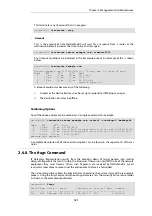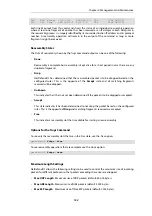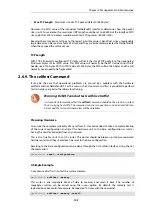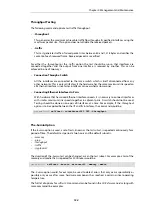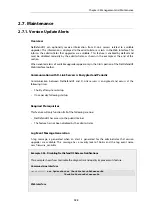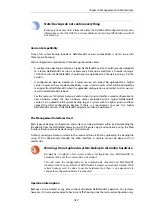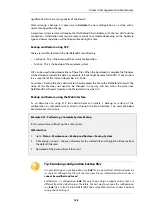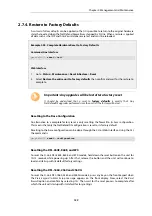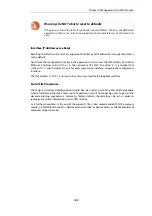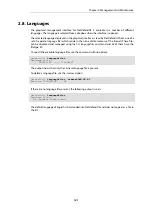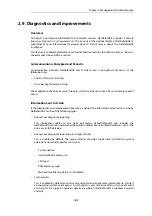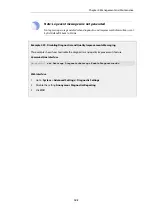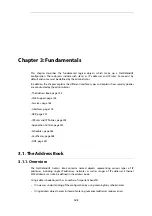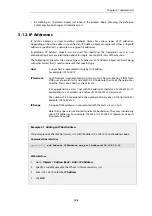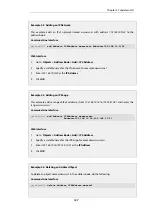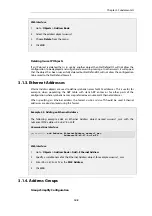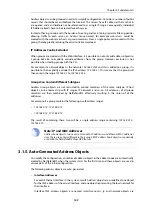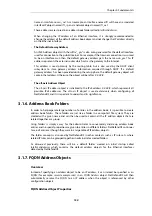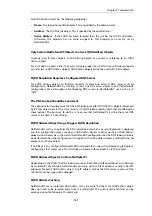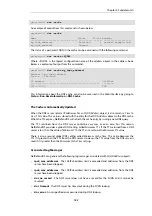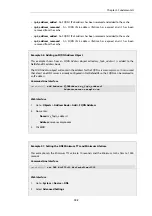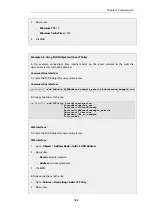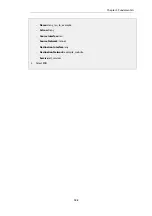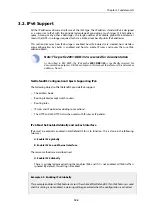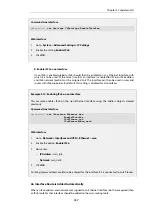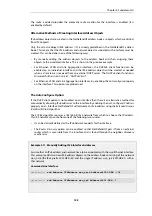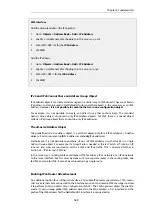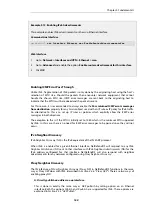
Chapter 3: Fundamentals
This chapter describes the fundamental logical objects which make up a NetDefendOS
configuration. These objects include such items as IP addresses and IP rules. Some exist by
default and some must be defined by the administrator.
In addition, the chapter explains the different interface types and explains how security policies
are constructed by the administrator.
• The Address Book, page 145
• IPv6 Support, page 156
• Services, page 165
• Interfaces, page 178
• ARP, page 221
• IP Rules and IP Policies, page 228
• Application Control, page 253
• Schedules, page 265
• Certificates, page 268
• DNS, page 281
3.1. The Address Book
3.1.1. Overview
The NetDefendOS
Address Book
contains named objects representing various types of IP
addresses, including single IP addresses, networks as well as ranges of IP addresses. Ethernet
MAC addresses can also be defined in the address book.
Using address book objects has a number of important benefits:
•
It increases understanding of the configuration by using meaningful symbolic names.
•
Using address object names instead of entering numerical addresses reduces errors.
145
Summary of Contents for NetDefendOS
Page 30: ...Figure 1 3 Packet Flow Schematic Part III Chapter 1 NetDefendOS Overview 30 ...
Page 32: ...Chapter 1 NetDefendOS Overview 32 ...
Page 144: ...Chapter 2 Management and Maintenance 144 ...
Page 284: ...Chapter 3 Fundamentals 284 ...
Page 392: ...Chapter 4 Routing 392 ...
Page 419: ... Host 2001 DB8 1 MAC 00 90 12 13 14 15 5 Click OK Chapter 5 DHCP Services 419 ...
Page 420: ...Chapter 5 DHCP Services 420 ...
Page 573: ...Chapter 6 Security Mechanisms 573 ...
Page 607: ...Chapter 7 Address Translation 607 ...
Page 666: ...Chapter 8 User Authentication 666 ...
Page 775: ...Chapter 9 VPN 775 ...
Page 819: ...Chapter 10 Traffic Management 819 ...
Page 842: ...Chapter 11 High Availability 842 ...
Page 866: ...Default Enabled Chapter 13 Advanced Settings 866 ...
Page 879: ...Chapter 13 Advanced Settings 879 ...

